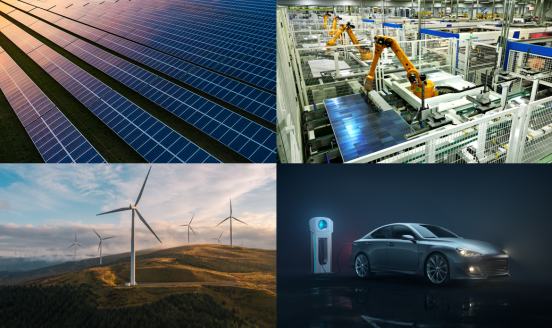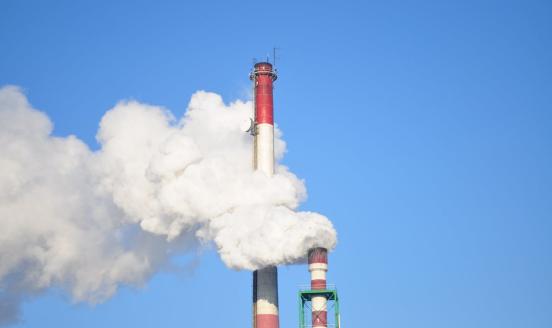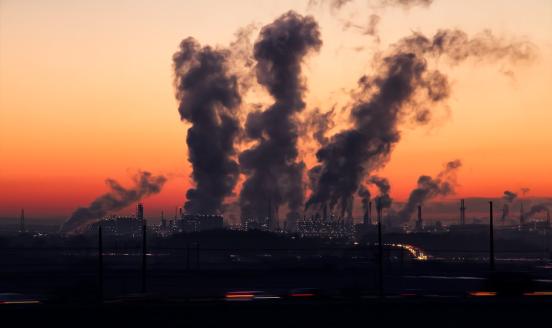A breakdown of EU countries’ post-pandemic green spending plans
An analysis of European Union countries’ recovery plans shows widely differing green spending priorities.

Policymakers have made a clear commitment to use the European Union’s post-pandemic recovery plan, Next Generation EU, to accelerate the bloc’s green transition. The underlying idea is simple: seize a moment of unprecedented economic and social disruption to reinforce the reorientation of Europe’s economic model towards sustainability, and in particular to accelerate the implementation of the European Green Deal. This idea also reflects a growing recognition that green investments have high fiscal multiplier effects and they can achieve in one swoop a so-called ‘triple dividend’: promoting economic growth, fostering job creation and reducing greenhouse gas emissions.
In practice, this has meant setting a 37% minimum target for spending on climate objectives under the Recovery and Resilience Facility (RRF), the largest component of Next Generation EU.
For this it is of course necessary to define ‘green’, ‘climate’ and ‘environmental’ spending. The regulation establishing the RRF (Art. 18) includes three different requirements in this respect for EU countries’ recovery and resilience plans, which are the framework for RRF spending:
(1) All proposed measures must respect the ‘do no significant harm’ principle in relation to environmental objectives, and adherence to this must be demonstrated;
(2) Countries must explain how their plans contribute to ‘the green transition’. This term refers to both environmental and climate-change objectives and is not subject to a target;
(3) At least 37% of a plan’s spending must go to measures which are specifically meant to support climate-change objectives, a narrower aim than the ‘green transition’. The regulation provides coefficients to be used for the calculation of each measure’s contribution to the target. Note that there are also coefficients for ‘environmental objectives’, but no minimum share of spending was established for these.
Bruegel’s dataset of EU countries’ recovery and resilience plans shows that all countries have so far met this 37% minimum requirement.
In the following, we look at both the climate and environmental components of the national plans in the RRF framework to understand better countries’ green spending priorities. Looking at both of these areas helps understand whether national spending plans reflect the environmental priorities of the European Green Deal, beyond only complying with the climate spending requirement of the RRF.
Overall priorities
We first looked at each country’s green spending, as categorised under the European Commission’s green ‘flagship areas’: ‘Power up’, ‘Renovate’, ‘Recharge and Refuel’ (referring, broadly, to cleantech, buildings energy efficiency and sustainable transport). This provides an understanding of overall spending priorities. Note that the numbers we present here are different from the allocations to climate-change objectives, as reported in the national plans, since we count the full allocations of measures included in the relevant categories (though some components might not contribute to climate objectives) and exclude some measures that contribute to the 37% target but have a non-green primary focus.
When classified this way, national allocations differ significantly (Figure 1). For the EU as a whole, ‘Recharge and Refuel’ is the main green spending priority, accounting for more than a third, or €86 billion. For countries including Estonia, Germany, Hungary, Latvia and Romania, this item even accounts for 50% or more of all green spending. Italy and Spain also have notably high sustainable transport allocations.
The ‘Power up’ priority has been allocated around a quarter of spending at EU level, or €55 billion. Shares are, however, much larger in countries including Cyprus, Czechia and Poland, which allocate close to two-thirds or more to this area. Though not visible in Figure 1, Sweden also spends money on this, but the amount could not be singled out based on the information in the plan, and is therefore captured by ‘other green’.
The smallest green flagship is ‘Renovate’ (energy efficiency of buildings), which receives €48 billion in the EU. France, Greece, Latvia, Slovakia and Belgium go against the trend by devoting considerably higher shares to improving their building stocks.
Finally, ‘other green’ in Figure 1 captures spending that could either not be put into one single category, or which is primarily devoted to other items in support of the green transition. This concerns €34 billion of spending on measures such as reforestation or biodiversity protection. For Sweden it includes broad ‘climate investments’ with many different elements. Luxembourg directs half of its green spending to environmental protection and biodiversity, and Croatia plans relatively high spending on waste and water management and tourism. Finally, a significant share of Slovenia’s ‘other green’ goes to water management and flood prevention.
A more detailed examination
While the Commission’s flagship-based classification is useful to get an overall idea of green spending priorities, a more granular breakdown is required to thoroughly understand the measures countries intend to put in place (Figure 2). Bruegel introduced its own classification system to allow for such a deeper analysis.
Unsurprisingly, this more detailed classification reveals significantly varying national spending priorities. In EU aggregate terms, spending to increase the energy efficiency of buildings takes the largest share, with €45 billion, almost a fifth of total green spending. Belgium and France have made this the largest component of their green spending, devoting around 28% to it. Greece, Latvia and Slovakia spend even higher shares on this, reflecting what we saw in Figure 1.
The second biggest category at EU level is public transport, with €34 billion, or 15%. This is a particularly large part of planned green spending in Romania (47%) and also in Austria, Hungary, Latvia and Lithuania, where it accounts for more than a third of green spending.
We created a separate category for high-speed trains, which ranks third in size with €26 billion, or 12%. Almost all the planned investments are in Italy (€24 billion), where it is one of the largest spending categories. The rest of the spending on high-speed trains is planned most notably in Czechia and Germany.
The fourth biggest category in the EU is renewable energy sources, which receives €23 billion, or around 10% of green spending. Most of this spending will be concentrated in three countries: it the biggest green component for Poland with 37% (€9 billion); Spain and Italy will also be big spenders in absolute terms, with €5 billion and €6 billion respectively.
Finally, it is interesting to note that measures specifically targeting hydrogen come in seventh place at EU level, behind electric mobility and climate adaptation. Countries will spend in total €11 billion (5% of green spending) on this category, with €3 billion of spending planned in Germany, €3 billion in Italy, €2 billion in France, and around €1 billion each in Poland and Romania.
Depending on which classification system is used, at EU level some €220 billion of the RRF funds is set to be spent on green elements. This is certainly a welcome and necessary effort, but it pales in comparison to the €350 billion per year that will be needed by 2030 to realise the aspirations of the European Green Deal.
All but three EU countries have submitted their national recovery plans at time of writing. The European Commission is in the process of assessing the compliance of these plans with the RRF regulation and so far has endorsed and sought Council of the EU approval for 14 plans. Once approved (most likely on 13 July), countries can receive their first disbursements of up to 13% of the total amount they have been allocated. The money for this is already being raised through the issuing of bonds by the European Commission, which started on 15 June 2021. Timely disbursement and implementation of the approved plans will then be essential if the RRF is to have an impact on the European economy, and on the European climate and environmental transformation.
The authors are grateful to Zsolt Darvas for comments.
Recommended citation:
Lenaerts, K. and S. Tagliapietra (2021) ‘A breakdown of EU countries’ post-pandemic green spending plans’, Bruegel Blog, 8 July



